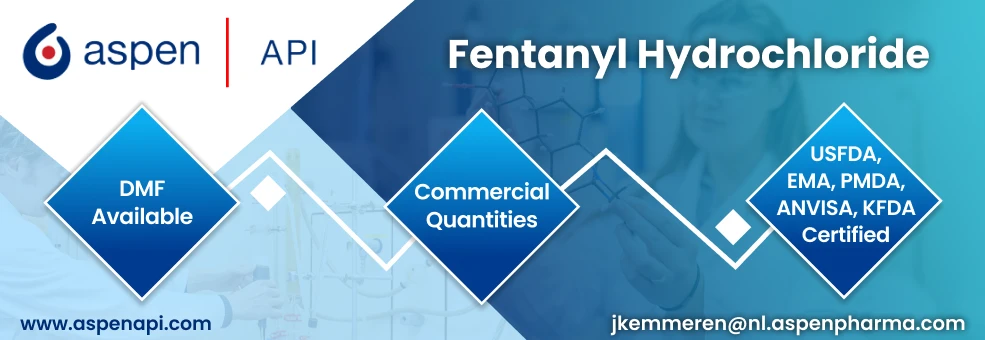The Covid-19 pandemic expedited the
growth of contract development and manufacturing organizations (CDMOs) as
pharma companies increasingly turned to them to accelerate drug development.
However, by the end of 2022, a decline in demand for
Covid vaccines hit some CDMOs, and they saw their supply deals come to an
abrupt end.The year 2022 also saw the steepest drop
in new drug approvals by the US Food and Drug Administration (FDA) since 2016.
Although the Center for Drug Evaluation and Research (CDER) only approved 37 new drugs, a 26 percent decline from the 50 drugs approved in 2021, there was a rise in new biologic drug approvals. Of these, 41 percent were biologics. Eight biologics were also approved by FDA’s Center for Biologics Evaluation and Research
(CBER) in 2022.Despite other challenges like high inflation, the ongoing Russia-Ukraine war and increasing economic uncertainties, CDMOs continued to grow through 2022 and the first quarter of 2023, particularly in biologics, cell and gene (C&G) therapies and highly potent active pharmaceutical ingredients (HPAPIs).CDMOs have been swift in altering their
production lines to meet the demands of smaller, more diverse projects. This
flexibility is likely to contribute to future growth. According
to Research and Markets, the global
CDMO market was valued at US$ 172.7 billion in 2022, and is projected to reach US$ 246.6 billion by 2026, growing
at a CAGR of 9.3 percent.View CDMO Activity Tracker of Q1 2023 (Free Excel Available)Large
CDMOs post double-digit growth; Sartorius buys Polyplus for US$ 2.6 billionSeveral big CDMOs such as the Lonza Group, Samsung Biologics and Siegfried AG reported impressive revenue
growth in 2022. Switzerland-based Lonza, the biggest CDMO player, saw its
revenue grow 15 percent to reach CHF 6.2 billion (US$ 6.7 billion) in 2022.Samsung Biologics’ CDMO revenue skyrocketed 49 percent in 2022, as compared to 2021, touching KRW 2.34 trillion (US$ 1.85 billion). Siegfried generated CHF 1,229 million (US$ 1.33 billion) in sales, a growth of 15.6
percent. And EUROAPI’s CDMO business grew 18.3 percent to reach € 267.5 million (US$ 0.28 billion). Meanwhile, Pfizer CentreOne generated US$ 1.34 billion in sales in 2022. As demand for Covid jabs dropped, Catalent announced structural changes and
cost-reduction measures, including more than 210 layoffs at
its Texas and Maryland facilities. It also laid off up to 400 employees at its Bloomington, Indiana site. Overall, Catalent’s revenues grew by 1 percent — at US$ 2.17 billion — in the last six months of 2022. Similarly, UK-based CDMO Abzena also laid off 66 employees in
San Diego.So far, the biggest CDMO deal of 2023 has
been the acquisition of France-based Polyplus, a provider of innovative upstream technologies for advanced biologic and C&G therapy production, by Germany-based CDMO Sartorius Stedim Biotech for €2.4 billion (US$ 2.6 billion). The deal gives Sartorius the know-how needed in the production of viral vectors for building C&G therapies.View CDMO Activity Tracker of Q1 2023 (Free Excel Available) Catalent
expands into cell therapies, Charles River Labs signs deal with RznomicsThe development of C&G therapies has emerged as a high growth
area for CDMOs. In 2022, CSL’s hemophilia B treatment Hemgenix emerged as the world’s most expensive medicine,
beating Bluebird bio’s C&G therapies — Skysona and Zynteglo. This year, around 13 C&G therapies are expected to receive approval in the US and Europe, offering big opportunities to CDMOs worldwide. The US$ 3.2 billion CDMO market for C&G therapies is estimated to be growing at 18.1 percent CAGR, and is poised to reach US$ 18.6 billion by 2032.In January, Catalent opened a new plasmid
DNA manufacturing facility in Belgium for cell therapies and expanded its partnership
with Sarepta for manufacturing its gene therapy candidate — SRP-9001. If approved, this could be the first gene therapy for Duchenne muscular dystrophy
(DMD). Catalent has also entered into a licensing agreement with Bhami Research Laboratory to access the latter’s formulation technology to help enable the subcutaneous delivery of high-concentration biologic therapies.Charles River Laboratories has signed a deal with
South Korean biopharma Rznomics to develop and manufacture viral
vectors for a gene therapy to treat liver cancer. It also inked another deal
with Purespring Therapeutics for plasmid DNAs and acquired SAMDI Tech for US$ 50 million. In recent years, the company has expanded its C&G portfolio through the acquisitions of Cobra Biologics, Vigene Biosciences and Cognate BioServices.View CDMO Activity Tracker of Q1 2023 (Free Excel Available) Samsung
Biologics, LOTTE, Lonza expand facilities for ADCsThe other emerging growth area for CDMOs
is biologics. The global CDMO market for biologics was valued at US$ 11.27 billion in 2021 and is expected to grow at 11.51 percent CAGR to reach US$ 21.90 billion by 2027. Technological advancements and approval of new biologic drugs is contributing to this growth.Biologics are triggering deals. After Provention Bio received FDA approval for its
type 1 diabetes drug Tzield last year, the US-based company
signed a deal with AGC Biologics in January this year to produce
the drug at its Seattle biologics plant. Last month, Sanofi announced it is acquiring
Provention Bio for US$ 2.9 billion.Several CDMOs are also vying for a share
of the fast growing antibody-drug conjugates (ADC) market, which is projected
to reach US$ 13.1 billion by
2030, up from US$ 3.51 billion in 2020. Samsung Biologics’ CEO, John Rim, announced in
January that ADCs would be a major focus area for the company. It is investing US$ 1.46 billion to construct its plant 5 for
biopharmaceuticals and plans to start operations in 2025. It has also entered
into a manufacturing deal with Pfizer for US$ 183 million.Newly-established CDMO LOTTE Biologics is also expanding its
facility for
ADCs in order to get a foothold in North America. LOTTE Biologics plans to invest US$ 3 billion
over the next seven years to build three mega plants. It has also acquired BMS’ manufacturing facility in New
York for US$ 160 million. Similarly, Lonza completed the expansion of
its facility for ADCs in Visp, Switzerland.View CDMO Activity Tracker of Q1 2023 (Free Excel Available)Growing
demand for HPAPIs, controlled substances draw investments in CDMOsThe global market for HPAPIs is growing
at 8.5 percent CAGR and is expected to reach US$ 34 billion in
2026. Several companies have announced expansion plans to meet this rising demand.Piramal Pharma Solutions has started production of APIs and HPAPIs at its
facility in Michigan, US. German CDMO ChemCon provides services for APIs,
HPAPIs and controlled substances, including amphetamines, cannabinoids, fentanyl derivatives and steroids. Additionally, it offers high-quality fine chemicals, isotopically labeled compounds, organic, inorganic and polymer chemistry. Its products are used for important specialty applications such as oncology, orphan diseases, critical care, dermatology, etc. Veranova’s subsidiary Macfarlan Smith has
completed a US$ 10 million expansion
of its mid-scale API manufacturing capabilities in Edinburgh, UK. Siegfried has opened a development center for
drug products in Barcelona, Spain, with dedicated facilities for HPAPI
products. Last November, Polpharma announced investment at its HPAPI facility in Poland. It expects to open a new R&D and production facility in the first quarter of 2024. Meanwhile, Eurofins CDMO Alphora Inc has also expanded its API development laboratories, including those for HPAPI development.CDMOs are also expanding their services
for controlled substances, particularly in therapeutic areas such as
depression, PTSD, addiction and pain management. Due to stringent regulations
on the development and manufacture of controlled substances, pharma companies
are turning to CDMOs that are experienced and licensed to handle them. These
include Cambrex Corporation, Curia, Patheon, Pfizer CentreOne, Veranova, ChemCon, Evonik, Minakem and Seqens.View CDMO Activity Tracker of Q1 2023 (Free Excel Available)Our
viewOver the last few years, we have noticed
how CDMOs have altered their business models with changes in the business
environment. Of late, CDMOs have benefitted from the trend of smaller biotechs outsourcing manufacturing of novel modalities, such as C&G and RNA therapies. Of the 37 drugs approved by the FDA’s CDER last year, 24 (or 65 percent)
were developed by mid or small-sized biopharma companies.We also know how the approval of new drugs benefits
the CDMO industry. For instance, FDA approved Rigel Pharma’s Rezlidhia (olutasidenib) in December as a treatment for relapsed and refractory acute myeloid leukemia. The drug’s dose manufacturing has been outsourced to Catalent. Therefore, a rise in the approval of novel drugs in 2023 should benefit the industry. And rapid advancements in biotechnology will ensure healthy growth of CDMOs.







